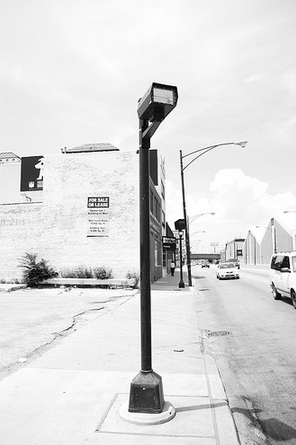Study Shows Red Light Cameras, Shorter Yellow Light Times May Cancel Out Safety Advantages
By Chuck Sudo in News on Dec 23, 2014 7:00PM
Chicago Transportation Commissioner Rebekah Scheinfeld released a statement Monday on the city’s red light camera program, insisting the nation’s largest network of such cameras “play(s) a key role in helping to improve public safety.”
The statement was released to media following recent reports from the Tribune indicating the opposite may be true. The Tribune hired researchers from Texas A&M’s Transportation Institute to study a cross-section of red light cameras in the network and where they’ve been installed. The researchers discovered 43 of the 90 cameras they studied were installed at intersections that averaged fewer than four crashes a year before the cameras arrived. Researcher Srinivas Geedipally questioned the safety benefits of placing cameras at relatively safe intersections. "Over four (injury crashes per year) you see a benefit, but less than four you don't see that benefit," Geedipally told the Tribune.
The Tribune followed that story with one showing the combination of cameras and short yellow light times could be a contributing factor to increasing the chances of rear-end crashes on the city’s streets. At three seconds, Chicago already has the shortest yellow light time of major cities with red light camera networks. Other cities are using improved research statistics and increasing the length of yellow light times at intersections to reduce the chance of rear-end crashes. Chicago, by contrast, is sticking to federal and state minimums. (CDOT is doing this despite an administrative judge’s revelation over the summer he regularly tosses between 60-70 percent of disputed red light tickets because evidence is present the yellow light times are shorter than three seconds.)
Research suggests adding a half-second to yellow light times would reduce the risk of rear-ending another vehicle and reduce the number of red light violations. This brings us back to the “safety versus revenue” argument that is at the heart of arguments for both the red light camera network and the speed camera network. Scheinfeld, in a nifty bit of parsing worthy of an Emanuel Cabinet member, said in her statement the Tribune reports “confirms that these cameras help to reduce dangerous angle crashes that are more likely than rear-end crashes to cause serious injury or death.”
Scheinfeld was referring to T-bone crashes at intersections, not rear-end crashes. The Tribune found there are 73 intersections in the red light camera network that averaged four or fewer crashed before the cameras became commonplace and, based on state accident data, their researchers indicated the cameras may have actually increased the number of crashes. David Zavattero, the CDOT official in charge of the red light camera program, defended the program, while Scheinfeld said, “We continue to review the program to ensure we are doing all that we can to further reduce these dangerous car crashes and their often devastating consequences.”
What isn’t in doubt is the financial windfall the red light camera network has been to the city. The cameras that were installed at those low-crash intersections have generated over $140 million in revenue.
